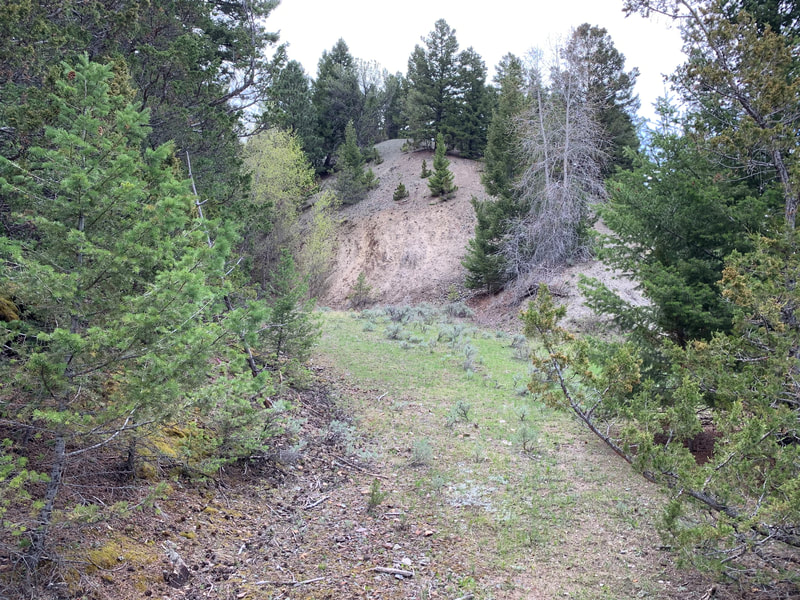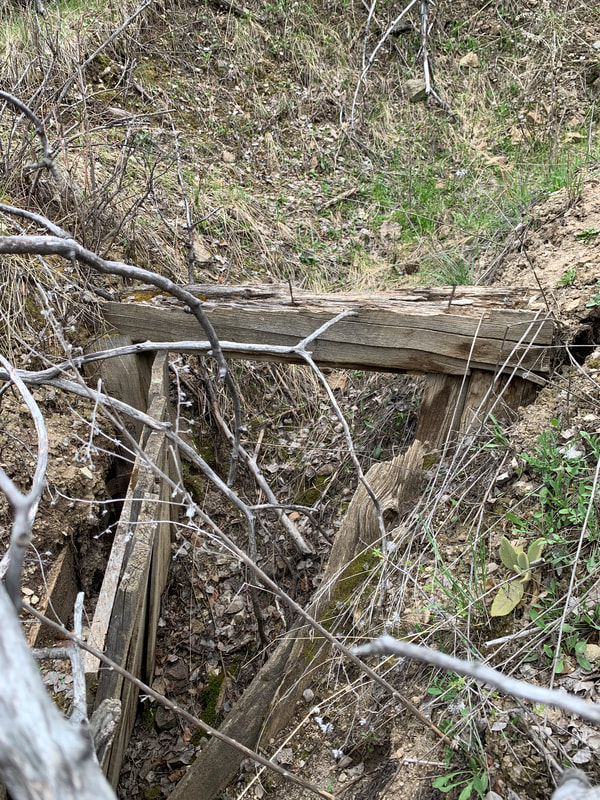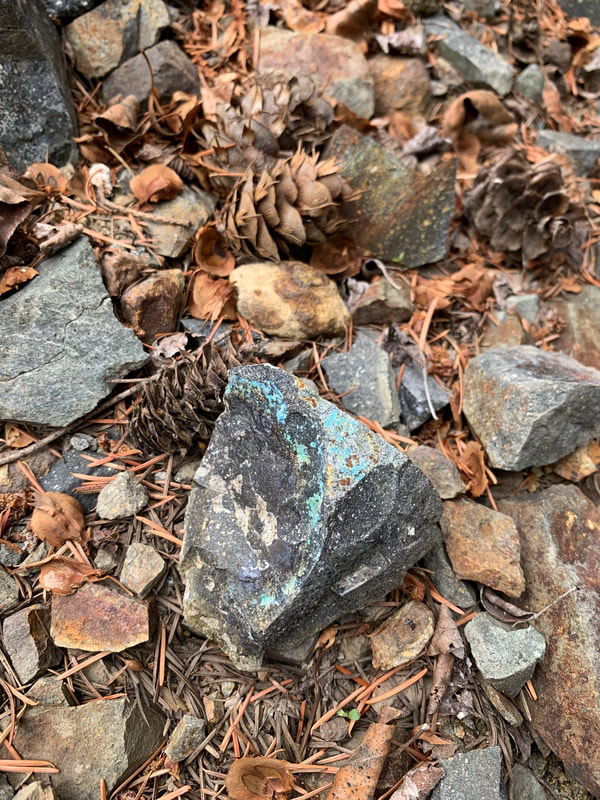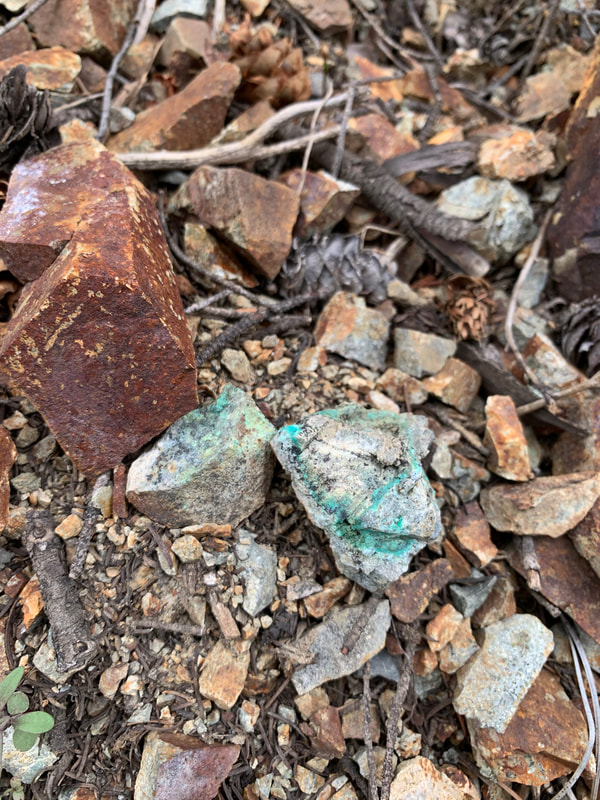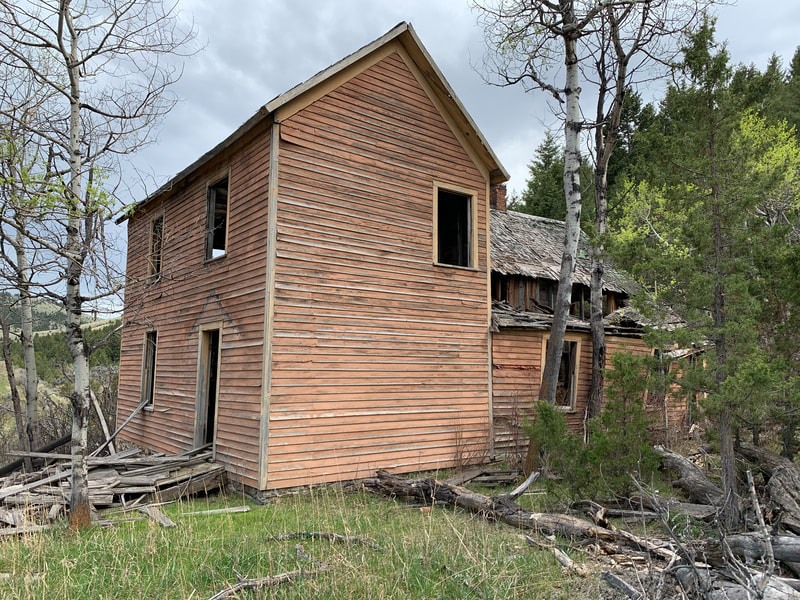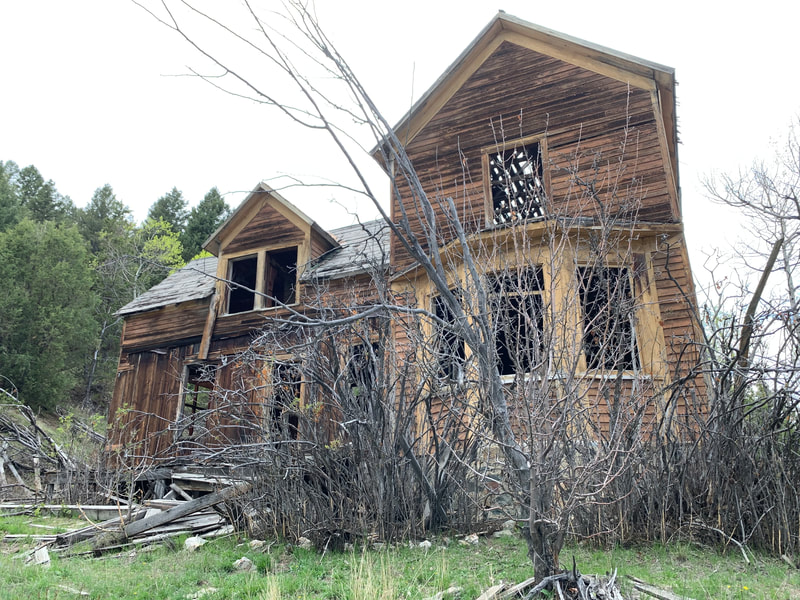The Bordello Mine
(Lode)
(20.66 acres)
Broadwater County, Montana
$19,500
Under Contract
(Lode)
(20.66 acres)
Broadwater County, Montana
$19,500
Under Contract
•Commodities: Gold, Silver, Copper
• Claim designation: un-patented Lode
• Size: 20.66 acres
• Location: Broadwater County, Montana
• Claim designation: un-patented Lode
• Size: 20.66 acres
• Location: Broadwater County, Montana
The Bordello Mine is a documented mineral property located in the historic Hassle mining district of central Montana. Featuring high-grade epithermal deposits containing Gold, Silver, and Copper, underground workings from the 1960s, and remnants of a two-story house with a colorful history spanning over one hundred years.
Located in the early 1880s, the Bordello Mine, as well as the larger Diamond Hill mines were driven into the high-grade mother-lode deposits of the district. The larger sister property ( Diamond Hill) is known for mining over 760,000 tons of ore between 1880 and 2000.
Reports of ore grades carrying up to sixteen ounces per ton of Gold have been located in the tabular chimney-like shoots of Quartz Diorite.
The deposit consists of heavily oxidized quartz diorite and limonite vein, with chalcopyrite and free milling Gold.
Multiple outcroppings of high-grade ore are exposed in the side wall of the old cut.
High quality specimen grade Gold Ore and Copper Ore are available in select areas.
. Estimated placer Gold grades are running between 1.2 grams-to-1.8 grams per yard.
Water is available nearby from the annual flowing Indian Creek.
A stunning double-level Victorian-style house, complete with old picket fencing, and a vintage automobile in the driveway is an attestation to the seclusion of the area. Local information, though not verified, suggests the structure was built in the early 1920s by one of the early founding prospectors of the Hassle district as a foreman's home.
After selling the claims to a larger company in the 1940s, the hillside mansion became known as a bordello for the local miners. Allegedly remaining active until WW2.
After the war, as with so many mines, the Bordello was auctioned off for low prices to groups of free-spirited individuals with very little capital. Briefly during the early 1960s, a sizable community of "flower children" occupied the area.
By 1968, mining interests were revived by local and national companies, then purchasing most of the claims back for general production.
Historical info:
As early as 1866 placer gold was discovered in the district. Later, simple quartz mining with shallow tunnels and open pits was utilized to retrieve the precious gold from lode sources.
The camp was officially formed around 1875 with about 40 miners working in the area. By 1880, placer mining was replaced with stamp mills and some hydro-sluicing operations. Mines in operation included the Bunker Hill, Ajax Mine, Big Hill, Lone Star, Diamond Hill, which was considered the Mother Lode in the area, and several other smaller operations.
When a post office was established in August 1895, the camp was renamed Hassel with respect for pioneer miner, Joseph E. Hassel.
At that time, the camp was called home to about 200 people, boasting several businesses, a Masonic Lodge, and a number of frame homes in addition to the numerous log miner’s cabins. At various times, the camp was also known as Knoxville, Placerville, and Florence City.
For about two decades the mines continuously produced, grossing about $5,000,000 in gold. The camp was most famous for its huge Diamond Hill 120-Stamp Mill which operated at full capacity from 1898 to 1900.
By 1910, however, the ores were beginning to decline and Hassel was all but abandoned. During the 1930s, mining reconvened for a short period until World War II stopped it again.
Last-ditch efforts were made in 1946 when Indian Creek was dredged, a process that destroyed the mine tunnels and covered much of what remained of the mining camp with high waste tailings.
During the late 1960s -through- the 1980s, sporadic mining in both the lode mines and placer fields took place
--
Access to the mine is available to any vehicle type during the warmer months, though a 4x4 is recommended. A parking and staging area is available across the creek from the mining property on federal lands, with a walking trail of about 120 yards to the boundaries.
Additional access is available from a northern route, suitable for 4x4 vehicles only.
This mine is available to the beginning enthusiast, up to an established mining company.
Located in the early 1880s, the Bordello Mine, as well as the larger Diamond Hill mines were driven into the high-grade mother-lode deposits of the district. The larger sister property ( Diamond Hill) is known for mining over 760,000 tons of ore between 1880 and 2000.
Reports of ore grades carrying up to sixteen ounces per ton of Gold have been located in the tabular chimney-like shoots of Quartz Diorite.
The deposit consists of heavily oxidized quartz diorite and limonite vein, with chalcopyrite and free milling Gold.
- Primary workings of the Bordello Mine consist of a large exploratory cut and an upper inclined shaft driven to an estimated 750.
- A caved haulage adit is present near the house foundation base to meet the NW trending deposit.
Multiple outcroppings of high-grade ore are exposed in the side wall of the old cut.
High quality specimen grade Gold Ore and Copper Ore are available in select areas.
- Estimated ore available ore grades are 0.40-to-16.00 OPT Au, with 1.2-to-27.00 OPT, and 2.5 -to- 18 OPT Cu
- Free milling Gold is available in the volcanically altered mineral-vein material.
- In addition to the established workings, multiple virgin outcroppings of the epithermal Gold deposit are visible above and below the adit area.
. Estimated placer Gold grades are running between 1.2 grams-to-1.8 grams per yard.
Water is available nearby from the annual flowing Indian Creek.
A stunning double-level Victorian-style house, complete with old picket fencing, and a vintage automobile in the driveway is an attestation to the seclusion of the area. Local information, though not verified, suggests the structure was built in the early 1920s by one of the early founding prospectors of the Hassle district as a foreman's home.
After selling the claims to a larger company in the 1940s, the hillside mansion became known as a bordello for the local miners. Allegedly remaining active until WW2.
After the war, as with so many mines, the Bordello was auctioned off for low prices to groups of free-spirited individuals with very little capital. Briefly during the early 1960s, a sizable community of "flower children" occupied the area.
By 1968, mining interests were revived by local and national companies, then purchasing most of the claims back for general production.
Historical info:
As early as 1866 placer gold was discovered in the district. Later, simple quartz mining with shallow tunnels and open pits was utilized to retrieve the precious gold from lode sources.
The camp was officially formed around 1875 with about 40 miners working in the area. By 1880, placer mining was replaced with stamp mills and some hydro-sluicing operations. Mines in operation included the Bunker Hill, Ajax Mine, Big Hill, Lone Star, Diamond Hill, which was considered the Mother Lode in the area, and several other smaller operations.
When a post office was established in August 1895, the camp was renamed Hassel with respect for pioneer miner, Joseph E. Hassel.
At that time, the camp was called home to about 200 people, boasting several businesses, a Masonic Lodge, and a number of frame homes in addition to the numerous log miner’s cabins. At various times, the camp was also known as Knoxville, Placerville, and Florence City.
For about two decades the mines continuously produced, grossing about $5,000,000 in gold. The camp was most famous for its huge Diamond Hill 120-Stamp Mill which operated at full capacity from 1898 to 1900.
By 1910, however, the ores were beginning to decline and Hassel was all but abandoned. During the 1930s, mining reconvened for a short period until World War II stopped it again.
Last-ditch efforts were made in 1946 when Indian Creek was dredged, a process that destroyed the mine tunnels and covered much of what remained of the mining camp with high waste tailings.
During the late 1960s -through- the 1980s, sporadic mining in both the lode mines and placer fields took place
--
Access to the mine is available to any vehicle type during the warmer months, though a 4x4 is recommended. A parking and staging area is available across the creek from the mining property on federal lands, with a walking trail of about 120 yards to the boundaries.
Additional access is available from a northern route, suitable for 4x4 vehicles only.
This mine is available to the beginning enthusiast, up to an established mining company.

